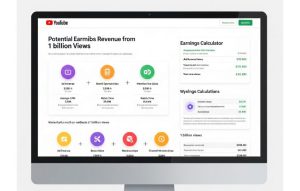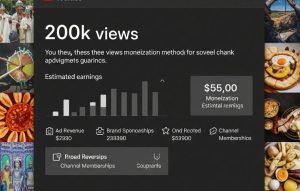You’ve poured your heart into creating a video, you’ve uploaded it, and you’re eagerly watching the numbers. The view count starts to climb and settles at 200. You pause and ask the big question: Is 200 views on YouTube good? It’s a question every single creator asks at the beginning of their journey, and the answer is more encouraging than you might think.
Let’s get straight to the point. The simple answer is: **Yes, 200 views can be very good, but it all depends on the context.** For a brand new channel with a handful of subscribers, 200 views is a fantastic sign of potential. For a channel with 100,000 subscribers, it might be a signal that something needs to change. In this guide, we’ll break down the context, what your 200 views really mean, and how to use them as a launchpad for massive growth.
Is 200 Views on YouTube Good? The Context is Everything
For burgeoning YouTube creators, hitting the 200-view mark on a video can feel like a small victory or a frustrating plateau. The reality is, whether 200 views is “good” is highly relative and depends on several factors, including your channel’s age, your niche, and your overall goals. However, for most new channels, 200 views is a very encouraging start and a significant step in the right direction.
To put this number in perspective, a staggering number of videos on YouTube receive very few views. The median number of views for a YouTube video is just 35, meaning that half of all videos on the platform have fewer than 35 views. When viewed through this lens, 200 views places a video well above the average performance.
For a brand-new channel, or a channel with a small subscriber base, achieving 200 views on a video within its first few days or week is a positive signal. It indicates that your title, thumbnail, and topic are resonating with a small audience, and the YouTube algorithm is beginning to test your content by showing it to more potential viewers. Many new creators report their initial videos struggling to reach even 50 views, making 200 a solid benchmark to have surpassed.
However, the journey of a YouTube video doesn’t stop at 200 views. For many creators, this number represents a common hurdle where a video’s initial momentum can slow down. This is often part of the YouTube algorithm’s testing process. The platform shows your video to an initial audience, and if the engagement metrics—such as click-through rate (the percentage of people who click on your video after seeing the thumbnail) and audience retention (how long people watch your video)—are strong, YouTube will continue to promote it to a wider audience. If these metrics are low, the video’s reach may be limited.
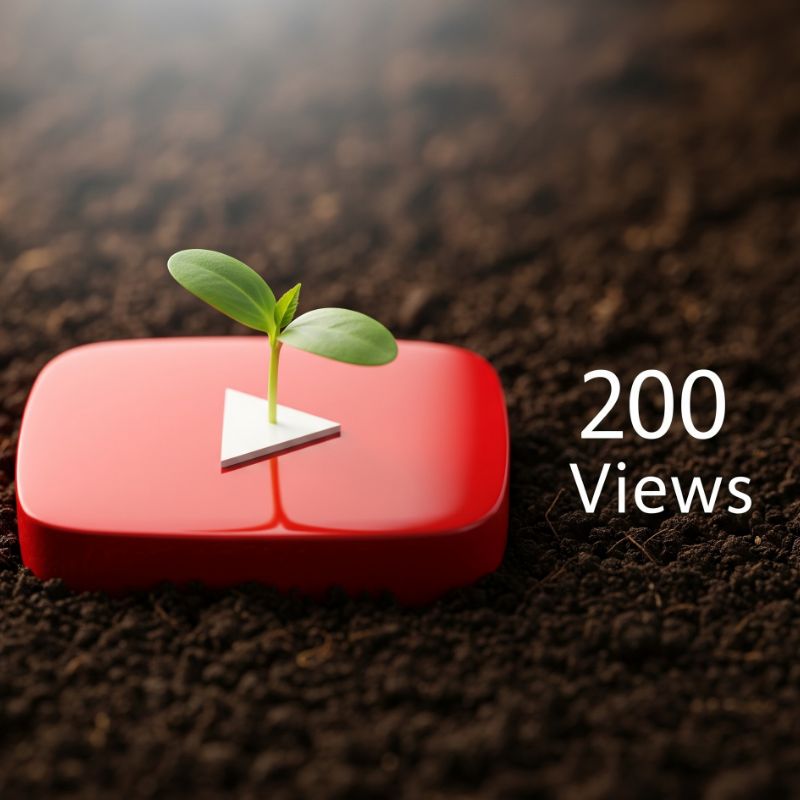
The Bigger Picture: Beyond a Single Video’s View Count
While 200 views on a single video is a good starting point, it’s crucial to focus on the broader picture of channel growth. Here’s how 200 views fits into the larger context of building a successful YouTube presence:
- Subscriber Count: If you have very few subscribers, 200 views is an excellent sign that your content is reaching non-subscribers. Conversely, if you have thousands of subscribers and are only getting 200 views, it might be a signal to re-evaluate your content strategy.
- Niche: In a highly specialized or less popular niche, 200 views can be a significant achievement. In a very broad and competitive niche like gaming or comedy, it’s a good start but will require more momentum to stand out.
- Engagement: More important than the view count itself is how viewers are interacting with your video. High audience retention, likes, comments, and shares are strong positive signals to the YouTube algorithm. A video with 200 views and high engagement is often more valuable than a video with 1,000 views and poor engagement.
The Road to Monetization
It’s also important to understand where 200 views stand in relation to YouTube’s monetization policies. To be eligible for the YouTube Partner Program and start earning money from ads, you need to meet specific thresholds. As of mid-2025, the requirements are:
- Initial Tier: 500 subscribers and 3,000 valid public watch hours in the last 12 months, or 3 million valid public Shorts views in the last 90 days.
- Full Monetization: 1,000 subscribers and 4,000 valid public watch hours in the last 12 months, or 10 million valid public Shorts views in the last 90 days.
Clearly, 200 views on a single video is a small fraction of what’s needed for monetization. However, every view contributes to your overall watch time. The key is to consistently create content that attracts viewers and encourages them to watch more of your videos.
Focus on Progress, Not Just Numbers
In conclusion, 200 views on a YouTube video is a good and encouraging sign, especially for new creators. It signifies that you’ve surpassed the performance of a vast number of videos on the platform and that your content has the potential to grow. Instead of getting fixated on this specific number, use it as a data point. Analyze the video’s performance, understand what worked, and focus on replicating that success and improving your engagement metrics. The path to a thriving YouTube channel is a marathon, not a sprint, and every 200 views is a valuable step along the way.
| Scenario | Why 200 Views is a Great Sign |
|---|---|
| A Brand New Channel (0-100 Subscribers) | Getting 200 views means you’ve reached beyond your immediate circle of friends. It shows the YouTube algorithm has found a small but interested audience for your topic. This is your first step to building a community. |
| A Small Channel (100-1000 Subscribers) | If you consistently get around 200 views per video, it shows you have a core, engaged audience that watches your content. This is a healthy sign of a loyal community forming. |
This early traction is what every large channel is built on. For more insights on how YouTube works, the official YouTube Creators channel provides excellent advice.
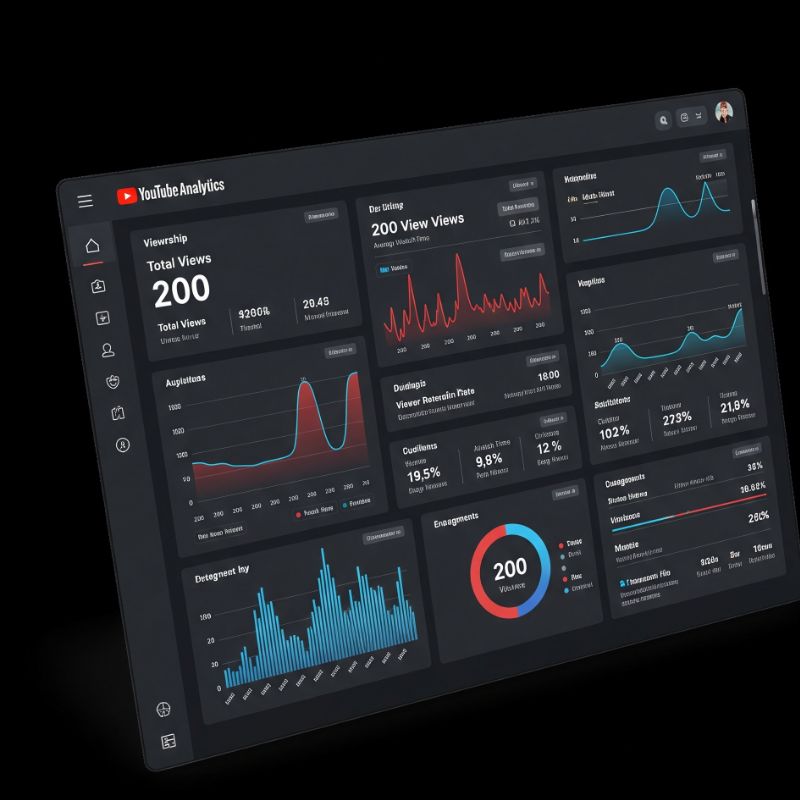
Key Metrics to Analyze Your 200 Views
The number “200” is just the surface. To truly understand if your video is performing well, you need to look at the data behind the views in your YouTube Studio. These metrics are far more important than the view count alone.
1. Audience Retention: Are People Actually Watching?
This is arguably the most important metric. If your audience retention is high (e.g., 50% or more), it tells YouTube that your video is engaging and valuable. A video with 200 views and 60% retention is much “better” than a video with 1,000 views and 10% retention.
2. Click-Through Rate (CTR): Did Your Title and Thumbnail Work?
Your CTR shows the percentage of people who clicked on your video after seeing it in their feed. A high CTR (above 5%) means your thumbnail and title are compelling. It shows you know how to grab your audience’s attention.
3. Traffic Sources: How Did Viewers Find You?
Check where your views are coming from. Are they from “Browse Features”? That’s great! It means YouTube is recommending your video on the homepage. Are they from “Youtube”? That means your SEO is working. This data tells you what’s working so you can do more of it. If your content strategy is still developing, you might even be weighing the pros and cons of different platforms, a topic we cover in What is the difference between YouTube and Vimeo?
How Much Money is 200 Views Worth?
Let’s be direct: from AdSense alone, 200 views is worth very little, likely just a few cents. To earn any ad revenue, you must first be in the YouTube Partner Program (1,000 subscribers and 4,000 watch hours). Even then, with an average RPM of $4, the calculation would be:
(200 views / 1,000) * $4 RPM = $0.80
However, thinking about money at this stage is a mistake. The true value of these 200 views is not the cents they generate, but the data they provide and the foundation they build for future, much larger earnings. To see how these numbers scale, you can read our guide on How Much Does a 100K View YouTube Video Make?.
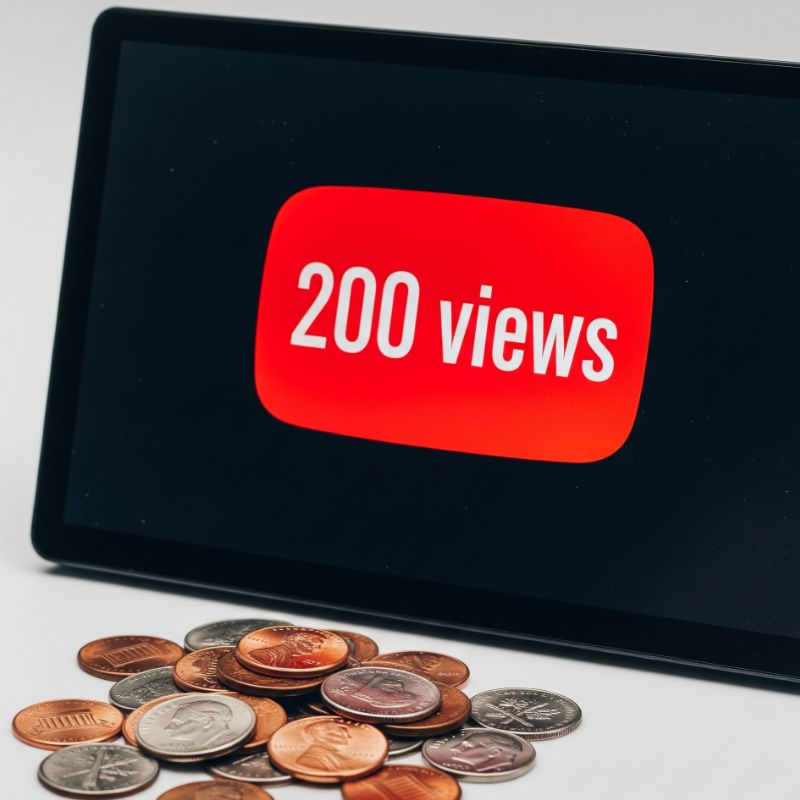
Strategies to Turn 200 Views into 2,000 (and Beyond)
Every massive channel started with a video that got 200 views. Here’s how to build on that initial success:
- Focus on a Niche: Don’t try to be everything to everyone. Create content for a specific audience. This builds a loyal community that will come back for every video.
- Double Down on What Works: Look at your video with 200 views. What was the topic? What was the format? Make another video like it, but even better.
- Improve Your Thumbnails and Titles: Your CTR is your key to getting more impressions. Make your thumbnails bright, clear, and intriguing.
- Engage with Every Comment: When you only have a few comments, treat each one like gold. Reply to them and build a relationship with your early supporters.
- Give Your Content a Strategic Boost: Sometimes your video just needs a small push to get noticed. A professional YouTube SMM panel can provide initial views and engagement to help it gain traction with the algorithm.
The journey from 200 to 500k views on YouTube is a marathon, not a sprint, and these strategies are the key.
The Journey to a Million Views: What to Expect
The path of a creator is one of milestones. Your first 200 views are a sign that you’re on the right track. The next goal is 1,000, then 10,000, and so on. Each level brings new challenges and opportunities. For example, your content format can drastically affect your growth and income, a topic we dive into in our article “Are YouTube Shorts Monetized?”
Ultimately, the question “Is 200 views on YouTube good?” is about perspective. It’s not the destination, but it’s a very promising start. For more on the creator economy, resources like Business Insider’s coverage of digital trends are a great read. To explore a wide range of growth tools, a general smm panel can be a useful resource.
Frequently Asked Questions (FAQ)
1. Do my own views count on YouTube?
Yes, your own views count initially, but only once or twice. Repeatedly refreshing the page will not increase the view count, as YouTube’s algorithm is designed to filter out bot-like or inauthentic behavior.
2. Why did my video stop getting views after 200?
This is very common. The YouTube algorithm initially shows your video to a small “test” audience. If that audience doesn’t engage well with it (low retention, low CTR), the algorithm will stop promoting it. This is valuable data telling you to improve your content, title, or thumbnail for the next video.
3. At what point do views start to make real money?
You need to be in the YPP to earn anything. “Real” or significant money typically starts to appear once your videos are consistently hitting tens of thousands of views. To see how the numbers scale up, you can read our guide on what to expect from 1 million views.





